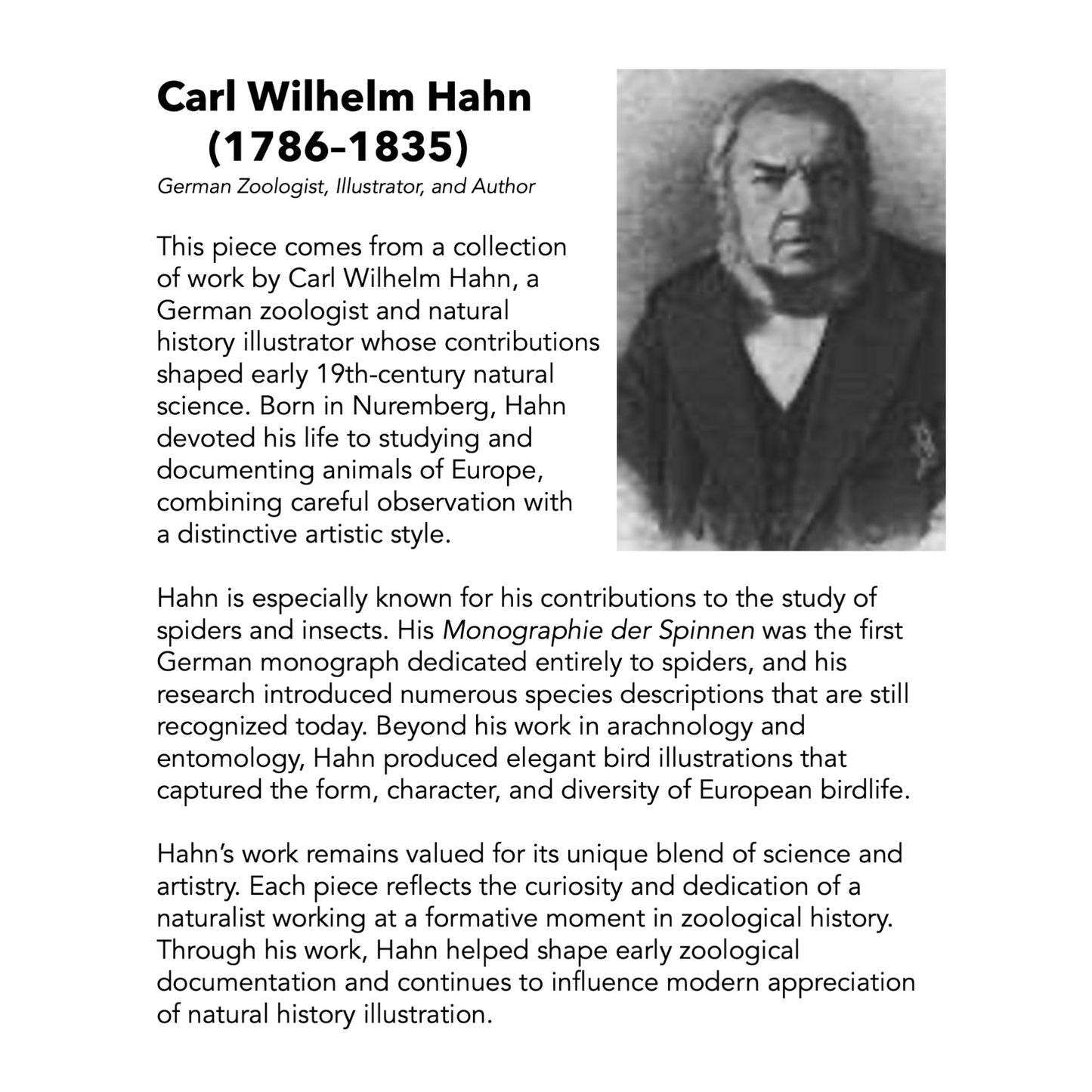Tyrannostorus
Mygale Plantigrades - Framed Art by Carl Wilhelm Hahn
Mygale Plantigrades - Framed Art by Carl Wilhelm Hahn
Couldn't load pickup availability
Discover an exceptional original hand tinted engraving from 1820 by renowned German zoologist and natural history illustrator Carl Wilhelm Hahn. This remarkable work features Mygale plantigrades, created for Hahn’s monumental publication Monographia Aranearum = Monographie der Spinnen, the first German monograph devoted entirely to spiders.
About the Artwork
This authentic 19th century engraving measures approximately 9.75 x 7.75 inches and highlights Hahn’s meticulous hand coloring and detailed linework. The species depicted under the historical name Mygale plantigrades represents one of the largest spiders in the world, now recognized as the Goliath Birdeater, scientifically known as Theraphosa blondi. Hahn’s illustration preserves early European scientific knowledge of these giant South American mygalomorph spiders.
Theraphosa blondi is a ground-dwelling tarantula native to the rainforests of northern South America. It is renowned for its enormous size, robust body, and impressive leg span, which can reach up to 30 centimeters. This species is primarily nocturnal and constructs burrows in the forest floor, where it hunts insects and small vertebrates. Despite its intimidating appearance, it is generally not dangerous to humans, and its venom is mild. Theraphosa blondi is also known for its dense setae (hairs), which it can release as a defensive mechanism.
Hahn’s depiction captures both the scale and anatomy of this remarkable spider, offering a rare historical record of European awareness of South American megafauna. His precise engraving communicates both scientific accuracy and artistic elegance.
This engraving is beautifully presented in an ornate gold frame measuring approximately 21.25 x 17.25 inches, complete with a secure hanging apparatus. A certificate of authenticity is included.
About Carl Wilhelm Hahn
Carl Wilhelm Hahn, a German zoologist and natural history illustrator, made enduring contributions to early 19th century natural science. Born in Nuremberg, Hahn devoted his life to studying and documenting European wildlife, combining meticulous observation with a distinctive artistic style.
He is especially celebrated for his pioneering work in arachnology and entomology. Monographie der Spinnen introduced numerous species descriptions still recognized today and established a foundation for future spider research in Germany. Beyond arachnids, Hahn also produced elegant bird illustrations known for their accuracy, character, and attention to detail.
Hahn’s work remains treasured for its rare blend of science and artistry. Each piece reflects the curiosity and dedication of a naturalist working at a formative moment in zoological history, and his illustrations continue to shape the modern appreciation of natural history art.
This Mygale plantigrades engraving offers a rare opportunity to own a museum worthy example of early zoological illustration. This work of art is even more impressive in person!
Share














